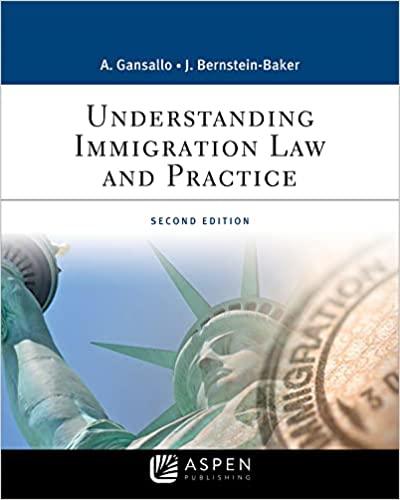Question
I do not understand how I am suppose to break this statute down into its elements? 518.18 MODIFICATION OF ORDER. (a) Unless agreed to in
I do not understand how I am suppose to break this statute down into its elements?
518.18 MODIFICATION OF ORDER.
(a) Unless agreed to in writing by the parties, no motion to modify a custody order or parenting plan may be made earlier than one year after the date of the entry of a decree of dissolution or legal separation containing a provision dealing with custody, except in accordance with paragraph (c).
(b) If a motion for modification has been heard, whether or not it was granted, unless agreed to in writing by the parties no subsequent motion may be filed within two years after disposition of the prior motion on its merits, except in accordance with paragraph (c).
(c) The time limitations prescribed in paragraphs (a) and (b) shall not prohibit a motion to modify a custody order or parenting plan if the court finds that there is persistent and willful denial or interference with parenting time, or has reason to believe that the child's present environment may endanger the child's physical or emotional health or impair the child's emotional development.
(d) If the court has jurisdiction to determine child custody matters, the court shall not modify a prior custody order or a parenting plan provision which specifies the child's primary residence unless it finds, upon the basis of facts, including unwarranted denial of, or interference with, a duly established parenting time schedule, that have arisen since the prior order or that were unknown to the court at the time of the prior order, that a change has occurred in the circumstances of the child or the parties and that the modification is necessary to serve the best interests of the child. In applying these standards the court shall retain the custody arrangement or the parenting plan provision specifying the child's primary residence that was established by the prior order unless:
(i) the court finds that a change in the custody arrangement or primary residence is in the best interests of the child and the parties previously agreed, in a writing approved by a court, to apply the best interests standard in section 518.17 or 257.025, as applicable; and, with respect to agreements approved by a court on or after April 28, 2000, both parties were represented by counsel when the agreement was approved or the court found the parties were fully informed, the agreement was voluntary, and the parties were aware of its implications;
(ii) both parties agree to the modification;
(iii) the child has been integrated into the family of the petitioner with the consent of the other party;
(iv) the child's present environment endangers the child's physical or emotional health or impairs the child's emotional development and the harm likely to be caused by a change of environment is outweighed by the advantage of a change to the child; or
(v) the court has denied a request of the primary custodial parent to move the residence of the child to another state, and the primary custodial parent has relocated to another state despite the court's order.
In addition, a court may modify a custody order or parenting plan under section 631.52.
(e) In deciding whether to modify a prior joint custody order, the court shall apply the standards set forth in paragraph (d) unless: (1) the parties agree in writing to the application of a different standard, or (2) the party seeking the modification is asking the court for permission to move the residence of the child to another state.
(f) If a parent has been granted sole physical custody of a minor and the child subsequently lives with the other parent, and temporary sole physical custody has been approved by the court or by a court-appointed referee, the court may suspend the obligor's child support obligation pending the final custody determination. The court's order denying the suspension of child support must include a written explanation of the reasons why continuation of the child support obligation would be in the best interests of the child.
Step by Step Solution
There are 3 Steps involved in it
Step: 1

Get Instant Access to Expert-Tailored Solutions
See step-by-step solutions with expert insights and AI powered tools for academic success
Step: 2

Step: 3

Ace Your Homework with AI
Get the answers you need in no time with our AI-driven, step-by-step assistance
Get Started


